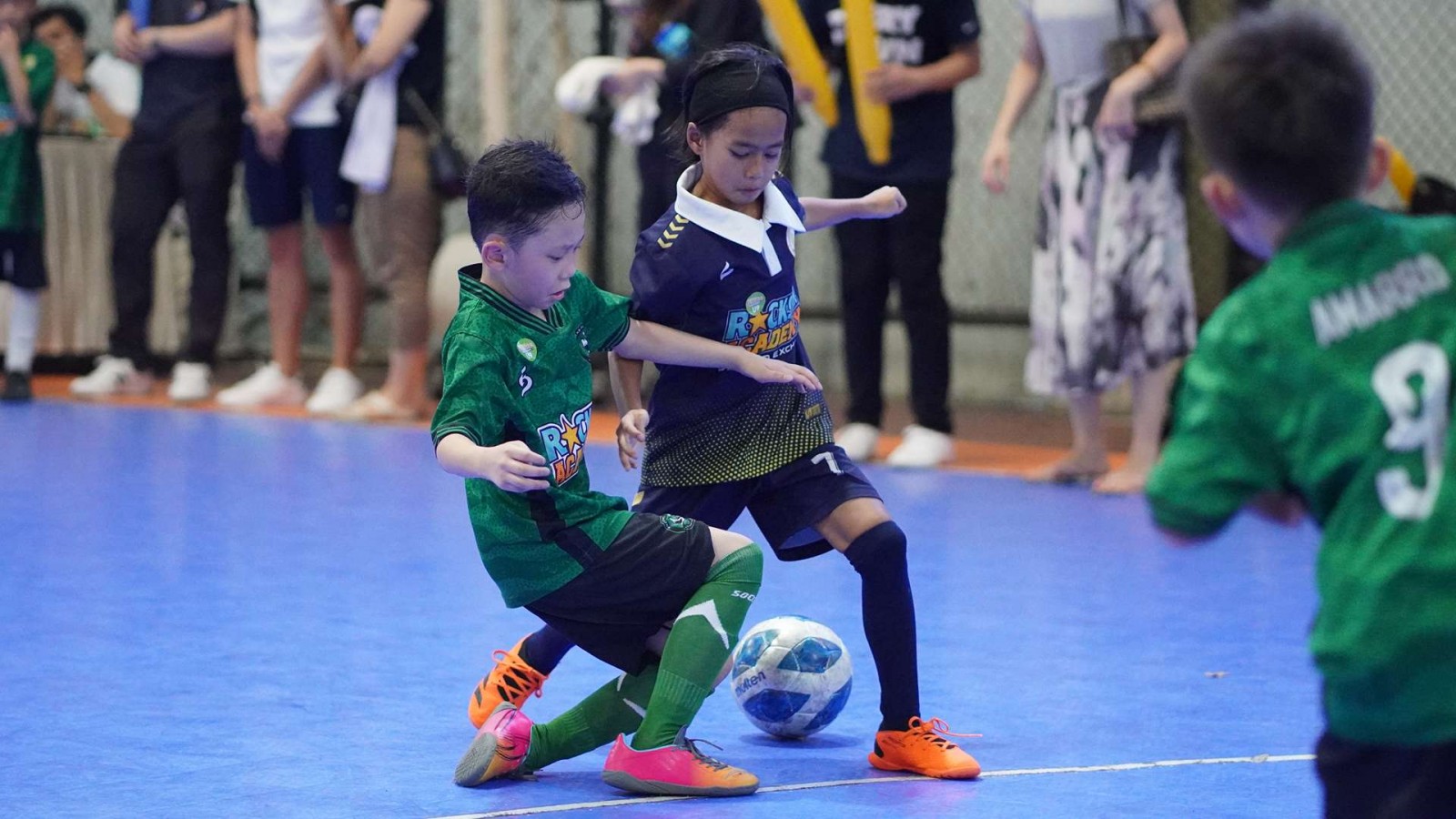Futsal Tackles: How to Take The Ball Effectively

One of the critical skills that players need to master in futsal is the tackles. Knowing how to tackle effectively not only helps you regain possession of the ball but also plays a significant role in your team’s overall strategy.
In this article, we’ll explore what futsal tackles are, when a tackle is considered legal, how to tackle your opponent safely, and how tackles impact futsal strategy.
What Are Futsal Tackles?
A futsal tackle is a defensive maneuver aimed at regaining possession of the ball from an opponent. Tackling in futsal can involve various techniques, including sliding, blocking, and intercepting the ball.
Unlike traditional soccer, where players can rely on a larger playing field and more physicality, futsal requires players to use their agility, skill, and timing to tackle effectively. The close quarters and fast pace of the game make tackles essential for both defense and transition play.
Types of Tackles in Futsal
There are several types of futsal tackles, such as:
A. Standing Tackle
This is the most common type of tackle where the defender approaches the opponent and tries to win the ball without leaving their feet. A standing tackle involves getting close to the opponent, positioning your body correctly, and using your foot to poke or push the ball away.
B. Sliding Tackle
While sliding tackles are more prevalent in outdoor soccer, they can also be used in futsal, albeit cautiously. A sliding tackle involves the player sliding on the floor to make contact with the ball. This type of tackle is riskier because it can lead to fouls if not executed correctly.
C. Block Tackle
This is a more passive approach where a player stands in the way of the opponent and the ball, using their body to block the pass. This type of tackle is often used when a defender anticipates a pass or shot and wants to prevent it from reaching its target.
When Is a Tackle Considered Legal?
Understanding the futsal rules surrounding tackles is crucial for avoiding fouls. In futsal, a tackle is considered legal as long as it meets specific criteria:
1. Ball First
The defender must make contact with the ball before making contact with the opponent. If the tackle results in the player kicking or tripping the opponent without first touching the ball, it is deemed a foul.
2. Fair Play
Tackles should be executed in a manner that does not endanger the safety of the opponent. Aggressive or reckless tackles that can potentially harm an opponent may result in a foul or even a red card.
3. Proximity
Players must be close enough to the opponent to make a legitimate attempt at winning the ball. If a player lunges from too far away, it may be viewed as a reckless challenge.
4. Referee’s Judgment
Ultimately, the legality of a tackle can depend on the referee’s interpretation of the situation. They will consider factors like the intent, method, and outcome of the tackle when making a decision.
How to Tackle Your Opponent Safely
Tackling can be risky, but with the right techniques and mindset, you can minimize the chances of injury for yourself and your opponent. Here are some tips for executing safe tackles in futsal:
A. Stay on Your Feet
Whenever possible, try to make a standing tackle. This allows you to maintain better balance and control over your body. It also reduces the likelihood of a foul being called.
B. Approach with Caution
As you approach the opponent, gauge their movements. Quick footwork and anticipation can help you position yourself for an effective tackle.
C. Use Your Body
Shielding is a valuable skill in futsal. Use your body to block your opponent’s path and limit their options, which can force them into a situation where a tackle becomes easier.
D. Timing is Everything
Wait for the right moment to tackle. Don’t rush in too early; instead, wait until the opponent makes a touch or takes a step, giving you the best chance to win the ball cleanly.
E. Follow Through
After executing a successful tackle, be prepared to follow up. Whether it’s passing the ball, making a run, or resetting your position, how you respond to a tackle can greatly affect the flow of the game.
F. Communicate with Teammates
Always keep communication open with your teammates. Inform them of your intentions when tackling, as this helps coordinate defensive efforts and prevent leaving gaps.
How Tackles Impact Futsal Strategy
In futsal, tackles play a pivotal role in shaping team strategy, influencing both defense and attack. Here’s how tackles can impact futsal strategy:
1. Regaining Possession
The primary purpose of a tackle is to regain possession of the ball. In futsal, every possession counts, and a successful tackle can quickly turn the tide of the game.
As example, imagine a futsal player defending against an opponent who is dribbling toward the goal. If the defender successfully tackles the ball away, they regain control for their team. This sudden shift can create an immediate opportunity to attack, especially if the opponent is out of position.
2. Creating Turnovers
Effective tackling can lead to turnovers, which occur when the defending team takes the ball away from the attacking team. Turnovers are crucial because they can happen in strategic areas of the field, allowing the defending team to launch a counterattack.
3. Setting Up Defensive Structure
Strong tackles help establish a solid defensive structure. When players are confident in their tackling abilities, they can position themselves better to prevent the opposing team from advancing.
In a match, if defenders communicate well and know when to tackle, they can create a wall that is hard for the attacking team to break through. This structure can force the opponents to make mistakes, like taking risky shots or trying to dribble through tight spaces.
4. Psychological Edge
Consistent and effective tackling can give a team a psychological advantage. If opponents know that the defenders are skilled at tackling, they may hesitate to take risks or be more cautious in their approach.
5. Transition Play
Quick transitions from defense to attack are essential in futsal. Tackles that lead to turnovers can spark fast breaks, allowing teams to capitalize on an unprepared defense.
6. Fouls and Free Kicks
Understanding how to tackle properly can help teams avoid unnecessary fouls that could give opponents free-kick opportunities. Set pieces are critical moments that can change the outcome of a match.
Ready to Improve Your Futsal Tackles Skill?
Mastering futsal tackles is an essential skill for any young athlete eager to excel in the game. If your child is passionate about developing their tackling abilities and wants to take their futsal skills to the next level, consider enrolling them in a futsal program at Rockstar Academy!
As the best Sports & Performing Arts Academy, Rockstar Academy offers a variety of physical activity programs that not only teach the fundamentals but also provide an exciting curriculum.
Your child will have the opportunity to participate in events like the RockOlympics and Elite Championships, where they can showcase their individual skills and compete as part of a team!
Our futsal program at Rockstar Academy is proud to introduce the Dream Team. Where Dream Team is a high-energy, competitive sports program designed to help young athletes reach their peak, both on the field and in life. Open to boys and girls, Dream Team offers 120 minutes of intense, skill-building training led by our top-notch professional instructors. It’s the ultimate challenge for talented and motivated athletes who want to take their game to the next level!
Plus, we offer a free trial class for those who want to give it a shot! So, why wait? Contact Rockstar Academy today and let your child embark on an unforgettable journey in futsal!
FAQ
Can I use my body to tackle in futsal?
Yes, using your body to shield the ball or block your opponent is legal and often encouraged in futsal. Just ensure that you do so without committing a foul.
Is sliding tackling allowed in futsal?
Sliding tackles are allowed but should be used sparingly and executed with care. They can lead to fouls if not done correctly.
What should I do if I miss a tackle?
If you miss a tackle, quickly recover your position and stay alert. Anticipate where the opponent will move and be ready to defend again.
How do I improve my tackling skills?
Practice is essential for improving tackling skills. Work on your timing, footwork, and positioning during training drills. Watching professional futsal matches can also provide insights into effective tackling techniques.



